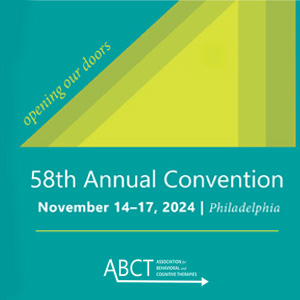Symposia
Technology/Digital Health
Broadening the Reach of Passive Sensing: Insights and Lessons Learned from Clinical Researchers
1 - (SYM 10) Examining Modulators of the Association Between Worry and Neurocognitive Function: A Focus on Dopamine and Estradiol
Friday, November 15, 2024
8:30 AM - 10:00 AM EST
Location: Liberty B, Level 3, Marriott Downtown
- CL
Courtney C. Louis, M.A. (she/her/hers)
Massachusetts General Hospital
Medford, Massachusetts, United States - JM
Jason Moser, Ph.D. (he/him/his)
Professor
Michigan State University
East Lansing, Michigan, United States
Speaker(s)
Co-author(s)
Abstract Body
Worry, a cognitive dimension of anxiety, is associated with disrupted prefrontal cortex function, notably in processes involved in error monitoring and working memory. While 17-β estradiol and dopamine are critical neuromodulators of PFC function, little work has integrated them into our understanding of worry’s impacts on PFC function. To address these gaps, we examined the effects of worry symptoms across a full menstrual cycle on the Error Related Negativity (ERN; a marker of error monitoring) and theta-gamma coupling (TGC; a marker of working memory). We further examined the moderation of these associations by dopamine (as measured by the catechol-o-methyltransferase [COMT] gene;) and within-person changes of estradiol levels across the menstrual cycle. Participants (N=135) completed verbal Flanker and working memory (N-back) tasks up to four times in-person. Saliva samples on the day of task completion were used to assay for estradiol and extract COMT gene polymorphisms. We parsed within- and between-person effects of worry and focused primarily on within-person changes in estradiol across the cycle. Our findings revealed between- and within-person interactions of worry on TGC (p = .001). First, for those with high chronic worry, within-person increases in worry were associated with reduced TGC. In contrast, for those with low average levels of worry, within-person increases in worry were associated with increased TGC. We also found that within-person increases in worry were associated with enhanced TGC for Val/Val carriers (those with less tonic dopamine), whereas there was no association for Met/Met carriers. The positive association between worry and TGC was further enhanced for Val carriers when estradiol levels were high. For the ERN, we found a trending interaction between COMT and between-person worry (p = .08) such that higher worry was associated with an enhanced ERN for Met/Met carriers whereas there was no association for Val carriers. The effects of worry and dopamine on the ERN were not further moderated by estradiol. These analyses highlight critical neuromodulators of the association between anxiety and neural function. To enhance this line of work, we will discuss the potential of wearable devices (e.g., mobile EEG, biosensors for hormone monitoring) for contributing to our understanding of anxiety’s impact on neural function, and related physiological processes, in real time.
Worry, a cognitive dimension of anxiety, is associated with disrupted prefrontal cortex function, notably in processes involved in error monitoring and working memory. While 17-β estradiol and dopamine are critical neuromodulators of PFC function, little work has integrated them into our understanding of worry’s impacts on PFC function. To address these gaps, we examined the effects of worry symptoms across a full menstrual cycle on the Error Related Negativity (ERN; a marker of error monitoring) and theta-gamma coupling (TGC; a marker of working memory). We further examined the moderation of these associations by dopamine (as measured by the catechol-o-methyltransferase [COMT] gene;) and within-person changes of estradiol levels across the menstrual cycle. Participants (N=135) completed verbal Flanker and working memory (N-back) tasks up to four times in-person. Saliva samples on the day of task completion were used to assay for estradiol and extract COMT gene polymorphisms. We parsed within- and between-person effects of worry and focused primarily on within-person changes in estradiol across the cycle. Our findings revealed between- and within-person interactions of worry on TGC (p = .001). First, for those with high chronic worry, within-person increases in worry were associated with reduced TGC. In contrast, for those with low average levels of worry, within-person increases in worry were associated with increased TGC. We also found that within-person increases in worry were associated with enhanced TGC for Val/Val carriers (those with less tonic dopamine), whereas there was no association for Met/Met carriers. The positive association between worry and TGC was further enhanced for Val carriers when estradiol levels were high. For the ERN, we found a trending interaction between COMT and between-person worry (p = .08) such that higher worry was associated with an enhanced ERN for Met/Met carriers whereas there was no association for Val carriers. The effects of worry and dopamine on the ERN were not further moderated by estradiol. These analyses highlight critical neuromodulators of the association between anxiety and neural function. To enhance this line of work, we will discuss the potential of wearable devices (e.g., mobile EEG, biosensors for hormone monitoring) for contributing to our understanding of anxiety’s impact on neural function, and related physiological processes, in real time.

.png)
